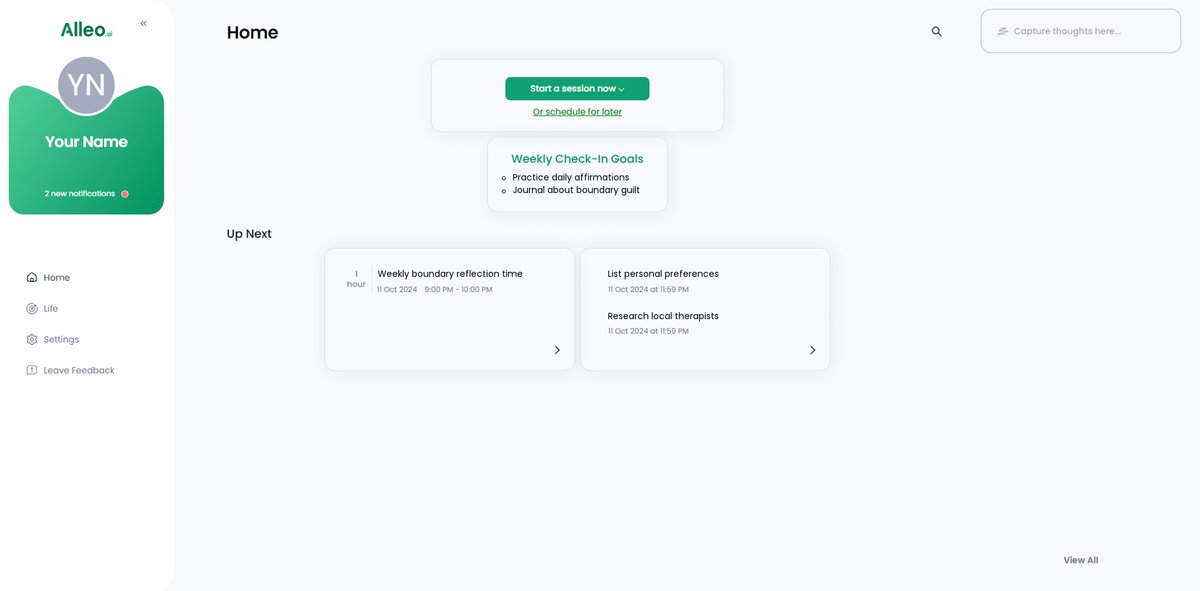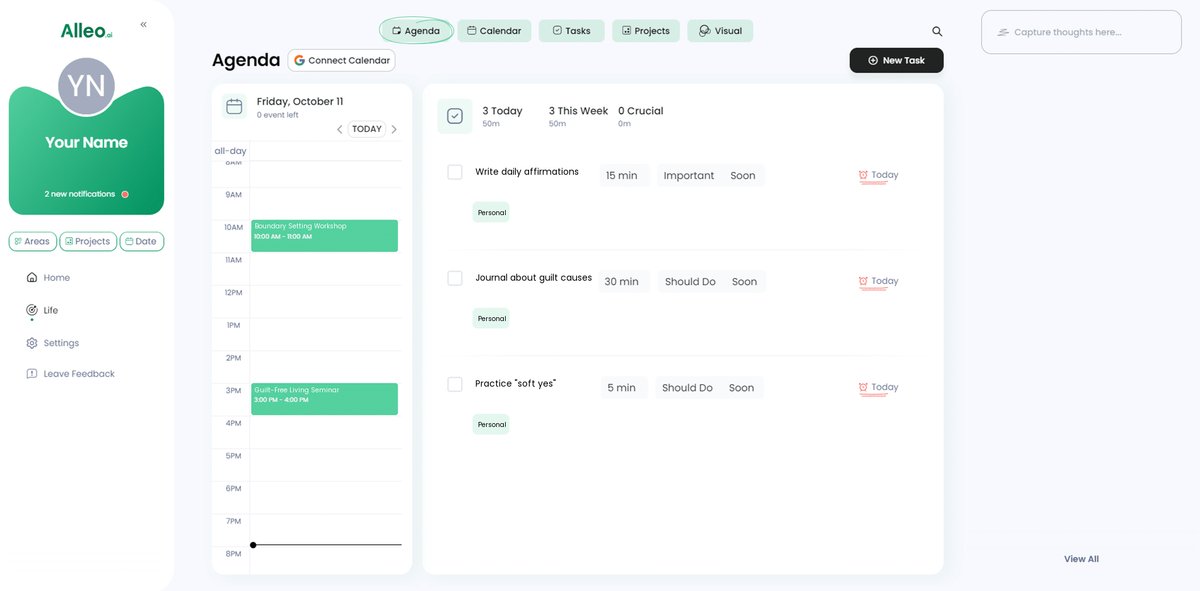5 Essential Ways to Overcome Boundary Guilt for People Pleasers
Are you constantly overwhelmed by guilt when you set boundaries with your friends and family? Overcoming people-pleaser boundary guilt can be challenging, but it’s essential for maintaining healthy relationships.
As a life coach, I’ve helped many women in relationships navigate the challenges of boundary setting. I often encounter clients who feel immense guilt after asserting their needs and practicing self-care for people pleasers.
In this article, you’ll discover specific strategies to overcome boundary guilt and manage people-pleasing behavior. We’ll cover self-affirmations, the “soft yes” technique, and more personal boundaries and assertiveness training techniques.
Let’s dive in and explore how to boost your self-worth and boundaries while maintaining emotional boundaries in your relationships.

The Emotional Toll of Setting Boundaries
Many clients initially struggle with the overwhelming guilt that follows setting boundaries, especially when overcoming people-pleaser boundary guilt. The emotional toll can be intense, leaving you feeling like you’ve let everyone down.
Prioritizing others over yourself often leads to burnout and resentment. In my experience, several clients report that this guilt is particularly strong in women who are conditioned to be caregivers, making self-care for people pleasers challenging.
This guilt isn’t just a minor inconvenience. It can seriously impact your mental health and overall happiness, highlighting the importance of managing guilt and establishing personal boundaries.
To break free from people-pleasing behavior, we need to understand why this guilt exists and how to address it effectively through assertiveness training and boundary setting techniques.

Key Steps to Overcoming Boundary Guilt
Overcoming people-pleaser boundary guilt requires a few key steps. Here are the main areas to focus on to make progress in setting boundaries and managing guilt.
- Practice Self-Affirmations for Boundary Setting: Reinforce your self-worth with daily positive affirmations to combat people-pleasing behavior.
- Use “Soft Yes” Technique for Gentle Boundaries: Learn and practice this technique to set personal boundaries kindly as part of assertiveness training.
- Reframe Boundaries as Personal Preferences: Communicate your preferences assertively to establish healthy relationships.
- Journal About Guilt to Identify Its Root Causes: Explore and address the origins of your guilt related to setting emotional boundaries.
- Seek Support from a Therapist or Support Group: Get professional help and share experiences with peers to enhance self-care for people pleasers.
Let’s dive in to these boundary setting techniques!
1: Practice self-affirmations for boundary setting
Practicing self-affirmations is crucial for reinforcing your self-worth and the right to set boundaries, especially when overcoming people-pleaser boundary guilt.
Actionable Steps:
- Create a list of positive affirmations that reinforce your self-worth and the right to set personal boundaries.
- Set a daily reminder to recite these affirmations, especially before challenging interactions that may trigger people-pleasing behavior.
- Track progress by noting down instances when affirmations helped in managing guilt and setting emotional boundaries in a journal.
Explanation:
These steps matter because they help you internalize the belief that your needs are valid. By consistently practicing self-affirmations, you build a stronger sense of self-worth and boundaries, essential for overcoming people-pleaser boundary guilt.
This, in turn, makes it easier to set and maintain boundaries. For further reading, check out this article on self-esteem therapy.
Here are some key benefits of practicing self-affirmations for setting boundaries:
- Boosts self-confidence and self-esteem
- Reduces anxiety about setting boundaries and managing guilt
- Reinforces your right to have personal limits and practice self-care for people pleasers
Setting self-affirmations is the foundation for overcoming boundary guilt and developing healthy relationships. Let’s explore the next step: using the “soft yes” technique for gentle boundaries.

2: Use “soft yes” technique for gentle boundaries
Using the “soft yes” technique can help you set boundaries in a kind and gentle manner, which is crucial for overcoming people-pleaser boundary guilt.
Actionable Steps:
- Practice in low-stakes situations: Start by using the “soft yes” technique in less critical interactions to build your confidence in setting boundaries.
- Role-play with a trusted friend: Simulate boundary-setting scenarios with someone you trust to refine your approach and improve assertiveness.
- Gradually apply in significant moments: Implement the “soft yes” technique in more important interactions as your confidence grows, enhancing your personal boundaries.
Explanation:
These steps are essential because they help you ease into boundary-setting without overwhelming guilt, a common challenge in overcoming people-pleaser boundary guilt.
By practicing in low-stakes situations and role-playing, you gradually build the confidence needed to apply this technique effectively, which is crucial for managing guilt and developing healthy relationships.
For more tips on handling pushy people, check out this article on introvert strategies.
Let’s move on to reframing boundaries as personal preferences, an important aspect of self-care for people pleasers.

3: Reframe boundaries as personal preferences
Reframing boundaries as personal preferences can make it easier to communicate your needs without feeling guilt, which is crucial for overcoming people-pleaser boundary guilt.
Actionable Steps:
- Write down personal preferences: List your preferences for different areas of life and how they translate into setting boundaries.
- Practice clear communication: Clearly and assertively communicate these preferences in everyday conversations to combat people-pleasing behavior.
- Reflect and adjust: Reflect on the outcomes and adjust the framing of your preferences as needed, enhancing your self-care for people pleasers.
Explanation:
These steps matter because they help you assert your needs without feeling like you’re imposing on others, which is essential in managing guilt associated with boundary setting.
By practicing clear communication and reflection, you build confidence in maintaining your personal boundaries. For additional tips on overcoming people-pleaser boundary guilt, check out this article on setting boundaries.
Consider these strategies for effective boundary communication:
- Use “I” statements to express your needs
- Be specific about your preferences
- Remain calm and assertive in your delivery
Reframing boundaries as preferences paves the way for easier communication and less guilt, supporting healthy relationships and fostering self-worth and boundaries.
Now, let’s explore journaling about guilt to identify its root causes.

4: Journal about guilt to identify its root causes
Journaling about guilt helps you uncover its root causes and patterns, which is crucial for overcoming people-pleaser boundary guilt.
Actionable Steps:
- Set aside weekly journaling time: Dedicate a specific time each week to write about your feelings of guilt related to setting boundaries and people-pleasing behavior.
- Use guided prompts: Respond to prompts that explore the origins of your guilt and any recurring themes you notice in your boundary setting techniques.
- Identify actionable changes: Reflect on your entries and develop a plan to address these root causes through specific actions to improve self-worth and boundaries.
Explanation:
These steps matter because they enable you to understand and address the underlying reasons for your guilt when managing emotional boundaries.
By regularly journaling and reflecting on your experiences, you can make conscious changes to alleviate these feelings and practice self-care for people pleasers.
For more insights, see this article on setting boundaries without feeling guilty.
Let’s now move on to seeking support from a therapist or support group to further enhance your assertiveness training and develop healthy relationships.
5: Seek support from a therapist or support group
Seeking support from a therapist or support group can provide the guidance and understanding needed to overcome people-pleaser boundary guilt and improve your self-worth and boundaries.
Actionable Steps:
- Research local or online therapists: Identify therapists specializing in boundary issues, assertiveness training, and managing guilt. Consider their credentials and client reviews.
- Attend a support group meeting: Find a support group focused on setting boundaries and overcoming people-pleasing behavior. Share your experiences and learn from others.
- Set goals with your therapist: Collaborate with your therapist to set measurable goals for gradual boundary improvement and developing healthy relationships.
Explanation:
These steps matter because professional support and peer experiences can accelerate your progress in overcoming people-pleaser boundary guilt. Therapists provide personalized strategies for setting boundaries, while support groups offer community and shared learning for self-care for people pleasers.
For more on the importance of therapy, read this article on self-esteem therapy.
Key benefits of seeking professional support include:
- Gaining expert insights into your specific challenges with personal and emotional boundaries
- Learning proven techniques for managing guilt and overcoming people-pleaser boundary guilt
- Building a support network for long-term growth in setting boundaries
Combining professional and peer support can significantly enhance your journey to setting boundaries without guilt and improving your people-pleasing behavior.

Partner with Alleo on Your Boundary-Setting Journey
We’ve explored the challenges of overcoming people-pleaser boundary guilt and the steps to achieve it. Did you know you can work directly with Alleo to make this journey of setting boundaries easier and faster?
Alleo provides affordable, tailored coaching support for overcoming people-pleaser boundary guilt, just like a human coach. Start with a free 14-day trial, no credit card required.
Set up your account and create a personalized plan for managing guilt and improving self-worth and boundaries in minutes. Our AI coach will guide you through overcoming people-pleaser boundary guilt, offering full coaching sessions on assertiveness training and self-care for people pleasers.
The coach will follow up on your progress in establishing personal boundaries and handle changes. You’ll stay accountable with text and push notifications to support your journey in setting healthy relationships and emotional boundaries.
Ready to get started for free and learn effective boundary setting techniques?
Let me show you how to begin overcoming people-pleaser boundary guilt!
Step 1: Log In or Create Your Account
To begin your journey towards guilt-free boundary setting, log in to your existing Alleo account or create a new one to access personalized AI coaching support.

Step 2: Choose “Improving overall well-being and life satisfaction” as your goal
Select “Improving overall well-being and life satisfaction” as your goal to address the root causes of boundary guilt and enhance your ability to set healthy limits without emotional turmoil.

Step 3: Select “Personal” as Your Focus Area
Choose the “Personal” life area in Alleo to address boundary-setting challenges, as it directly relates to improving your self-esteem and relationships, helping you overcome guilt and assertively communicate your needs.

Step 4: Starting a coaching session
Begin your journey with an initial intake session, where you’ll discuss your boundary-setting challenges and work with the AI coach to create a personalized plan for overcoming guilt and establishing healthy boundaries.

Step 5: Viewing and managing goals after the session
After your coaching session on overcoming boundary guilt, find your personalized goals displayed on the home page of the Alleo app, allowing you to easily track and manage your progress towards guilt-free boundary setting.

6: Add events to your calendar or app
Track your progress in overcoming boundary guilt by using the calendar and task features in the Alleo app to schedule and monitor your boundary-setting activities, such as practicing self-affirmations, journaling sessions, or therapy appointments.

Your Journey to Guilt-Free Boundaries
I know setting boundaries can feel overwhelming and guilt-inducing, especially for those overcoming people-pleaser boundary guilt. But remember, it’s a journey worth taking for your self-worth and boundaries.
We’ve explored practical strategies like self-affirmations and the “soft yes” technique for managing guilt. These steps will help you feel more confident in setting boundaries and less guilty about assertiveness training.
You also learned the importance of reframing boundaries as personal preferences and journaling to uncover guilt’s root causes. Seeking support from a therapist or support group can further enhance your progress in establishing healthy relationships and emotional boundaries.
It’s time to prioritize your well-being and embrace healthier relationships through effective boundary setting techniques. Take the first step today in your self-care journey as a people pleaser.
Let Alleo support you on this journey of overcoming people-pleaser boundary guilt with personalized coaching. Try it for free and experience the difference in your personal boundaries.